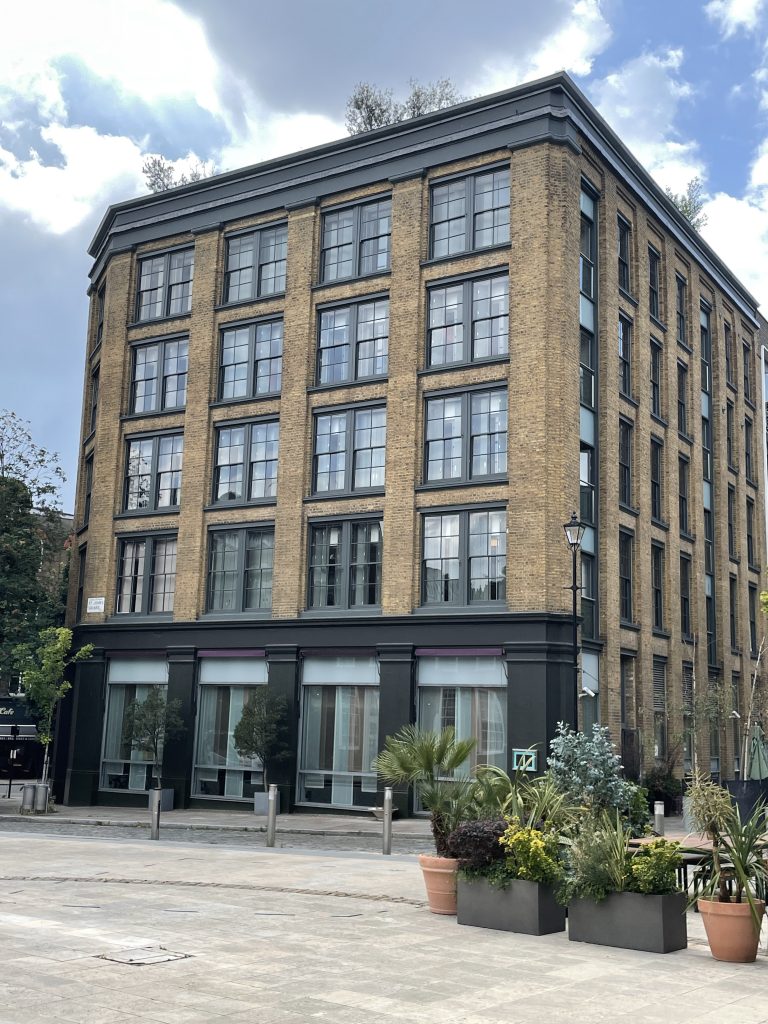St John’s Square was never intended to be a square. From its creation in the 12th century until the 16th century, it was the inner precinct of the monastic buildings of the Priory of St John of Jerusalem – the English headquarters of the Knights Hospitallers. Even after the Order of St John had been suppressed by Elizabeth I, the old precinct became known as St John’s Court or just St John’s, or even St Jones. It was only by the middle of the 18th century that the precinct become generally known as St John’s Square.
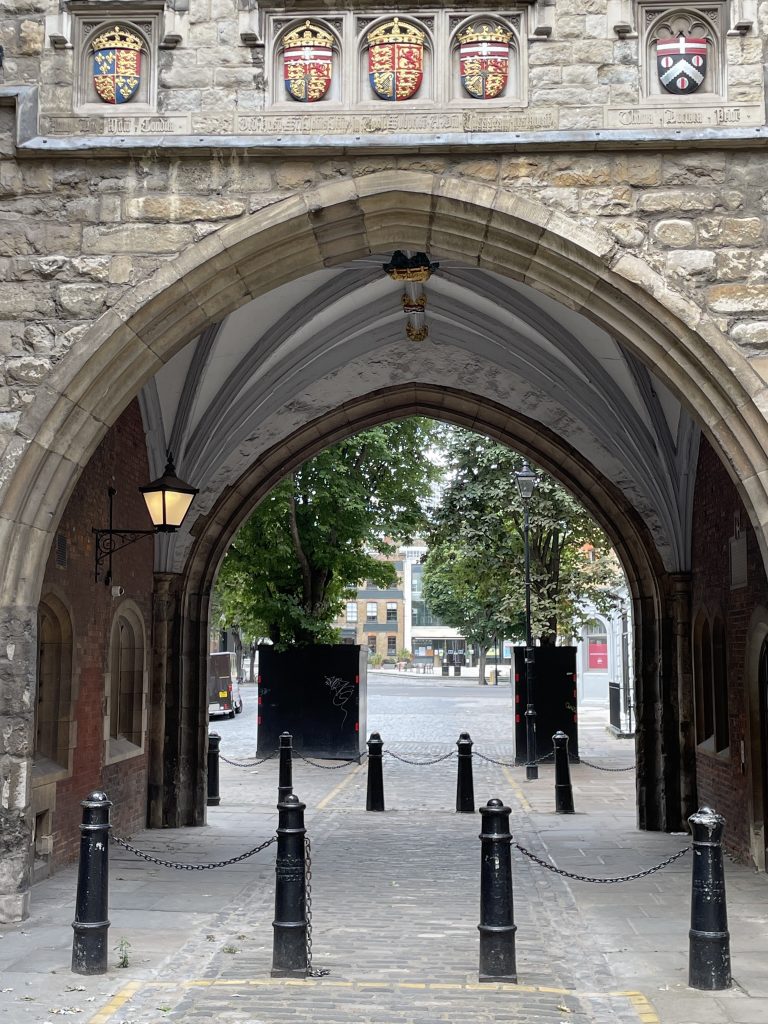
For many years after the dissolution of the priory, the old precinct stayed relatively untouched. Development started after 1607 when the King granted the priory building to a City fishmonger, who then sold on plots for housebuilding. Soon the former precinct had become a high-class residential quarter. But by the end of the 17th century, the area was losing its original cachet, and rich home owners began to move to the more fashionable West End. The large houses were pulled down and replaced by terraces of smaller brick-faced houses.
Even some industry moved in. Israel Wilkes set up a distillery in one of the properties in the square. But generally speaking, St John’s Square retained its respectable character into the 19th century – several clergymen lived here. But as the century progressed, the square became ever more densely built up and industrialized.
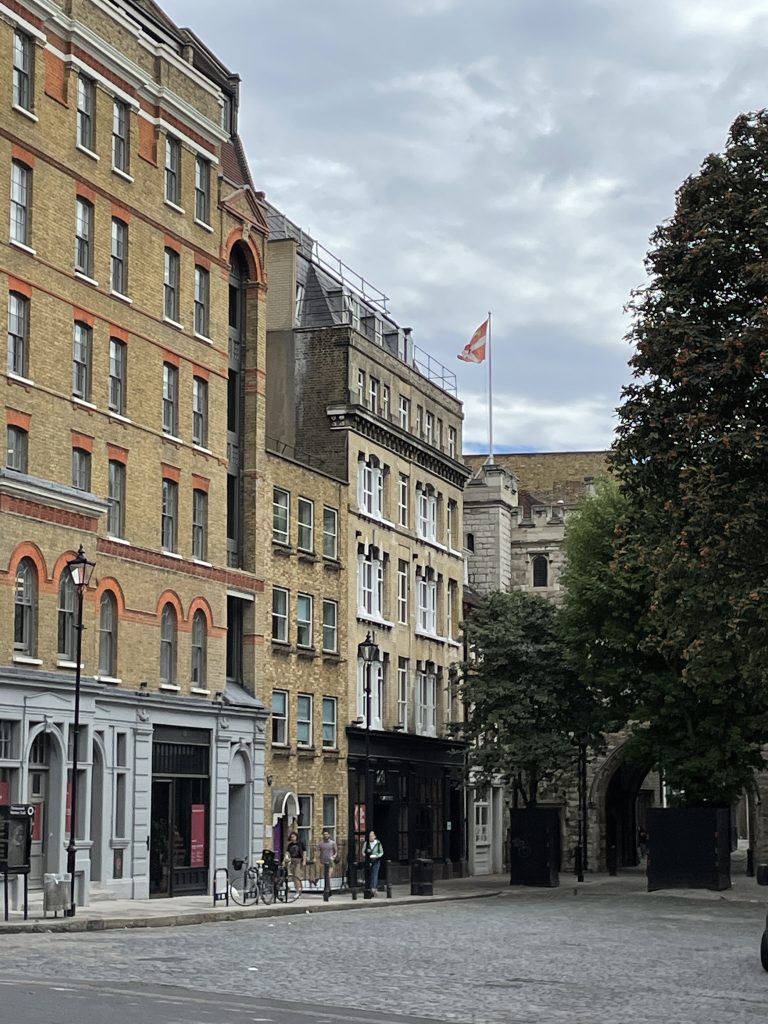
A final blow was struck by the construction in the 1870s of Clerkenwell Road, which was simply driven through the centre of St John’s Square, forever separating it into two halves. The new road also opened the whole area up to larger-scale development, mainly for factories and warehouses. What residences remained became ever more subdivided and finally lapsed into virtual slums.
Many of the buildings on the square were destroyed by wartime bombing and there was a rash of building in the 1960s and 70s, particularly on the southwestern side, with mainly office blocks. Since the 1980s, the square has attracted different kinds of businesses. Buildings have been remodelled or replaced – and that trend continues.
Turning to the buildings themselves, the numbering starts on the south side. No. 1 St John’s Square was built in 1963 as an office block. It is called Gate House, which obviously refers to St John’s Gate but it is rather inappropriate since the block is far away from the gate. It is an honest ’60s building with an unashamedly exposed reinforced-concrete frame. It has a variety of panels between the steelwork – brick, aggregate, enamel, and glass mosaic. It is being improved at the moment – perhaps they’ll improve the name as well.
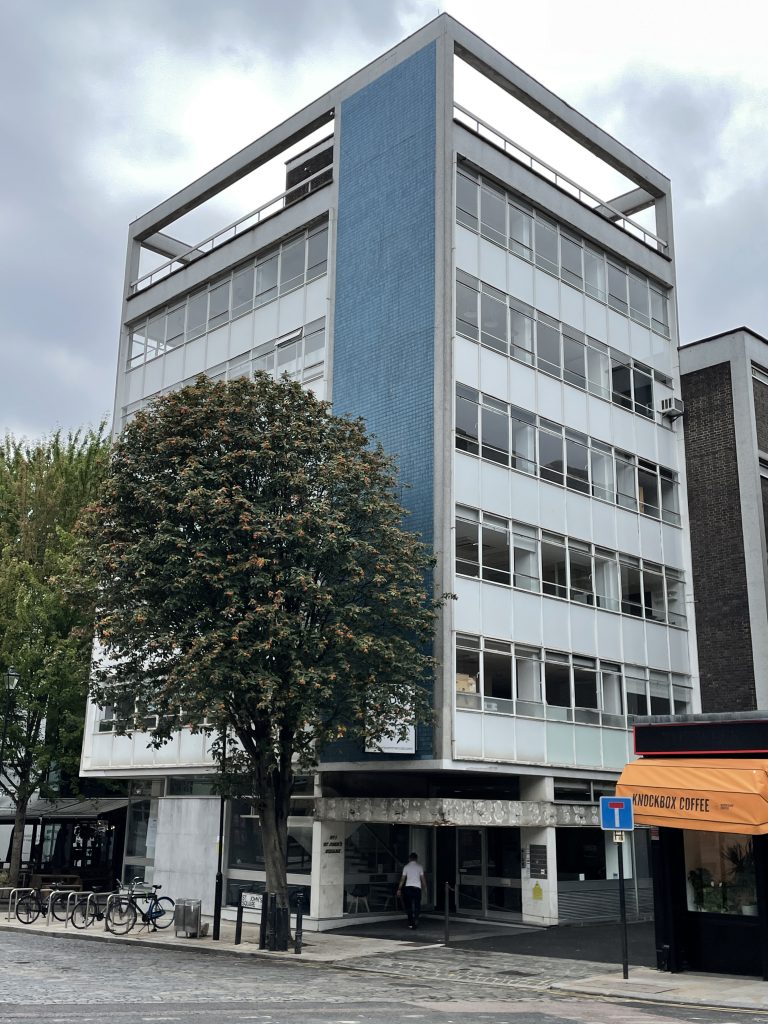
The bar next door at Nos. 2-5 St John’s Square is the front on the square of a large building which extends a long way back along St John’s Place. It was built in 1964 Whitbread, the brewery company. Whitbread had a long association with the site. They owned a tavern here as far back as the 19th century, called the Coach and Horses, and then the Bear. They had it rebuilt in 1898. The 1960s building included a replacement public house and offices.
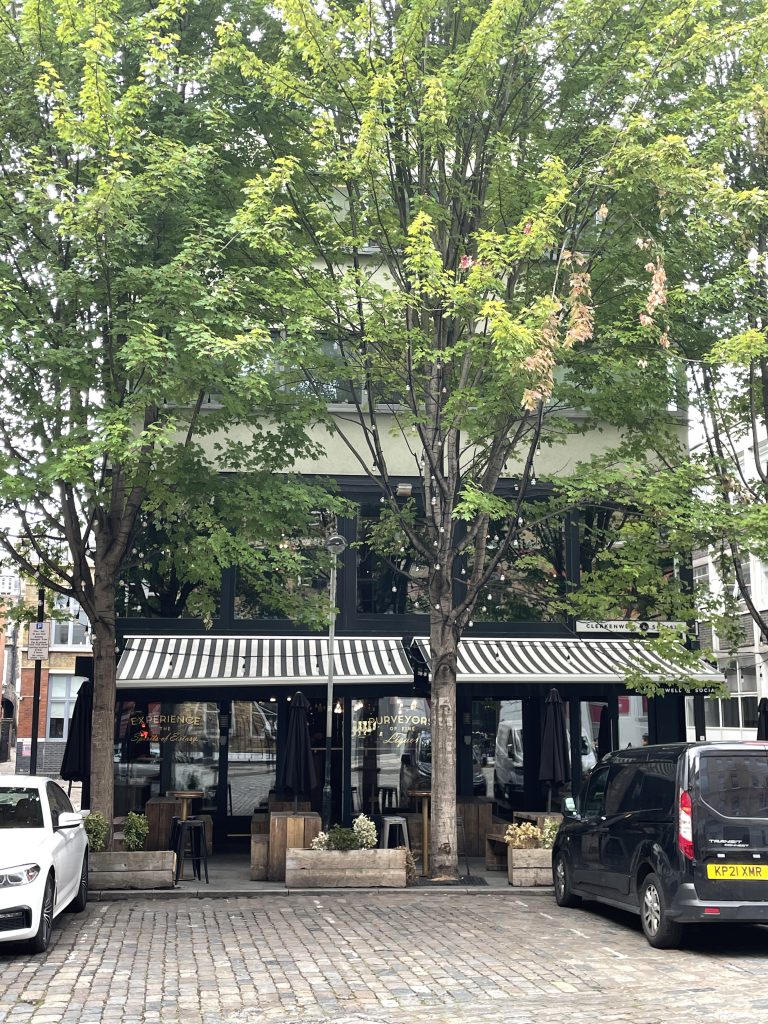

The Smithson, as it is named, at Nos. 12 – 14 St John’s Square is a more lavish building, hailing from a decade or two later than the 1960s building spree on the west side of the square.
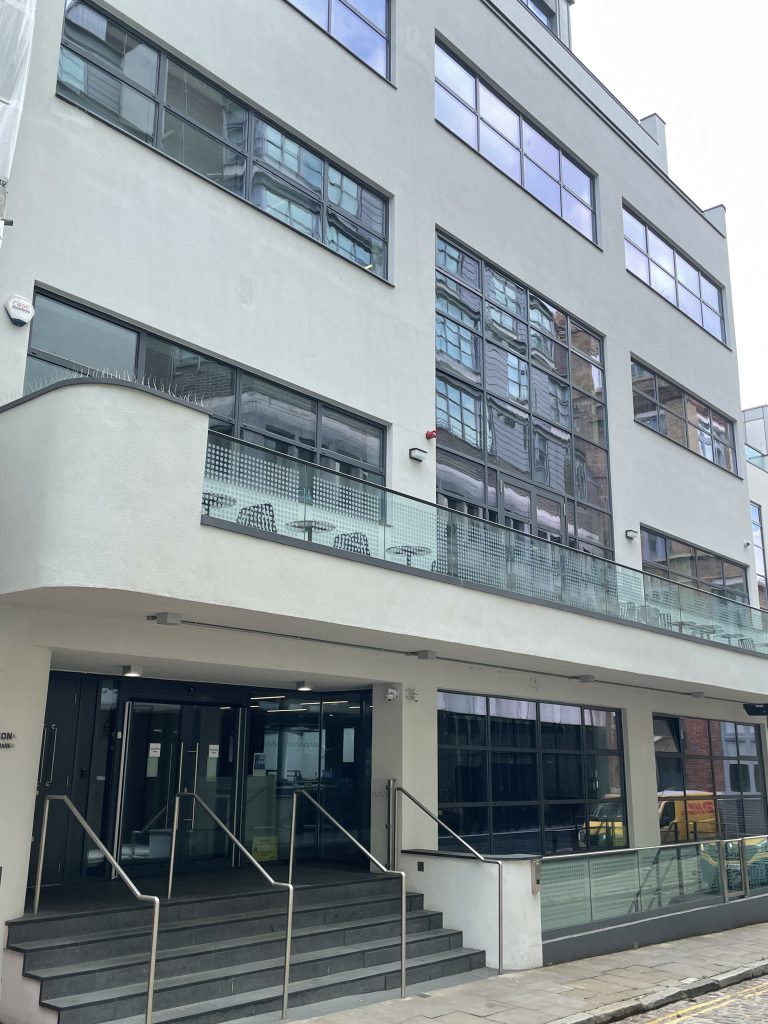
On the south side of the square, another 1960s building is being substantially revamped to create ‘The Sans’. It is promoted on the hoardings of the building site as a “reimagined” former 1960s office block set within a private courtyard setting. Architects love to boast.
On the east side of the square next to St John’s Gate is Nos 14–17 St John’s Square, an office block which was constructed in 1972, by which time architects and clients were no longer embracing exposed girders. This replaced old 19th century warehouses with a spruced-up 19th century warehouse – in appearance at least. It has been extended quite considerably at the back.
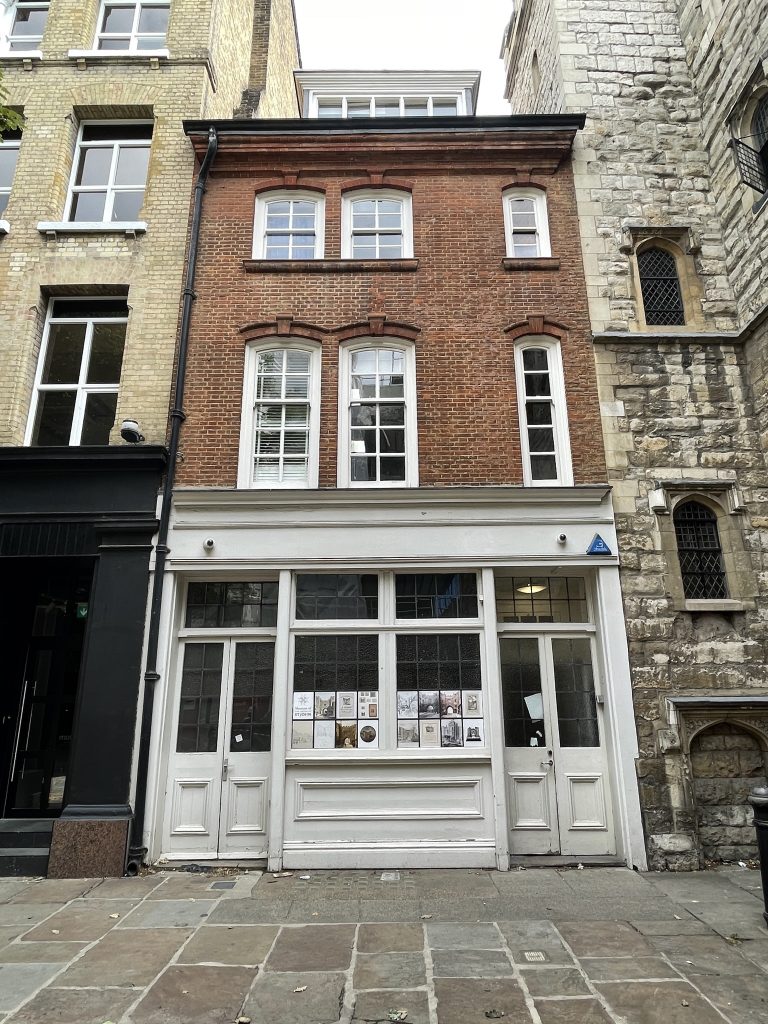
Nos 28–30 St John’s Square – a big strong building, faced in white gault brick – is a rare survivor in the square from the 19th century. It was built as a factory-warehouse in the 1880s.
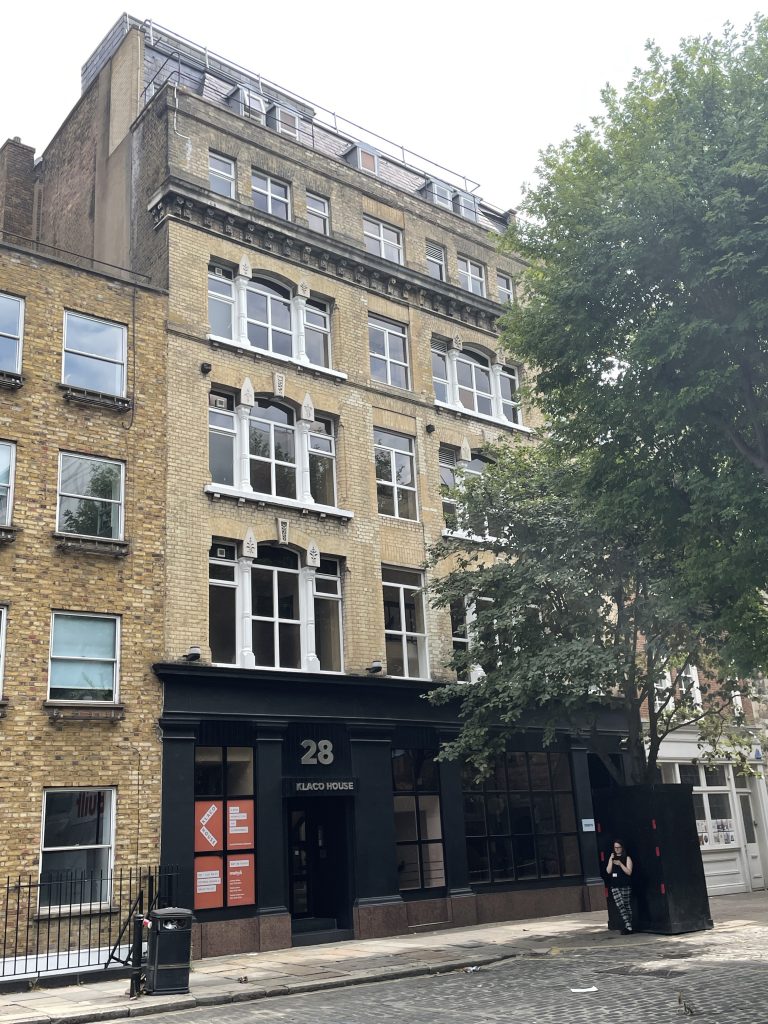
No. 31 St John’s Square doesn’t necessarily look it, but it’s another building from the 1960s. It fills the space from an 18th century house which had either decayed or been bombed in the War. The new building is said to have ‘a plain neo-Georgian front’. It is hard to see any Georgian in its modern windows. Perhaps if you squint.
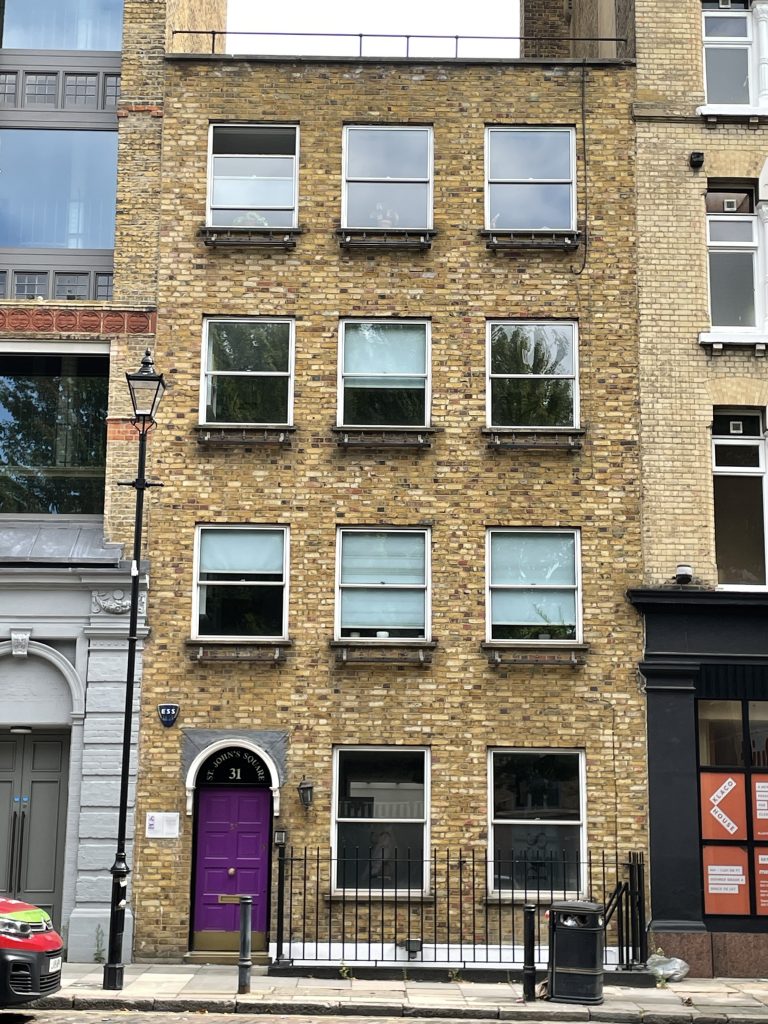
The imposing building on the corner with Clerkenwell Road is of Penny Bank Chambers, whose main entrance is in Clerkenwell Road. But it also has an entrance in the square to premises on the ground floor which is No. 33 St John’s Square.
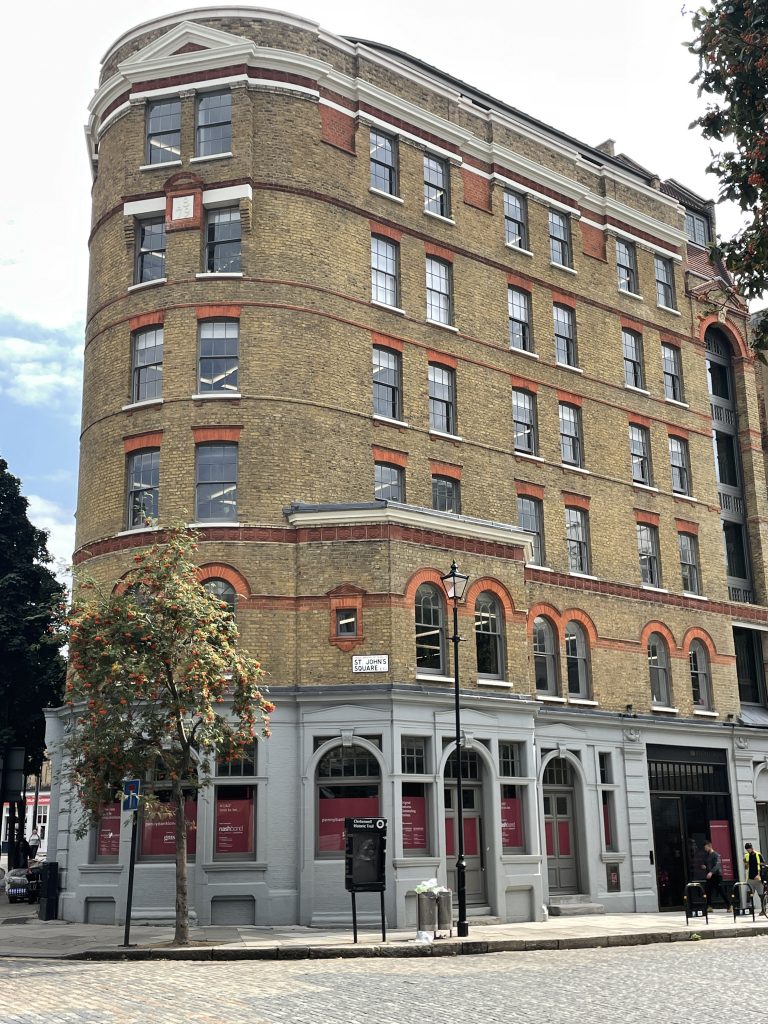
You have to cross Clerkenwell to reach the second part of St John’s Square. The building which fills the east side of this part of the square is the Museum of the Order of St John.
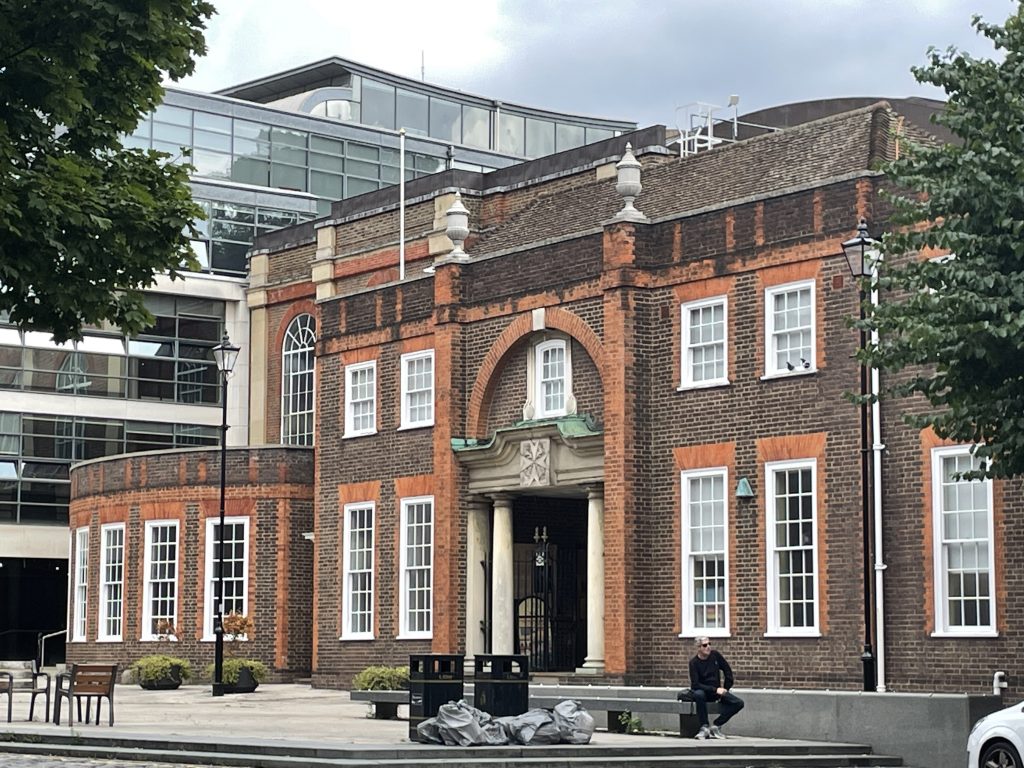
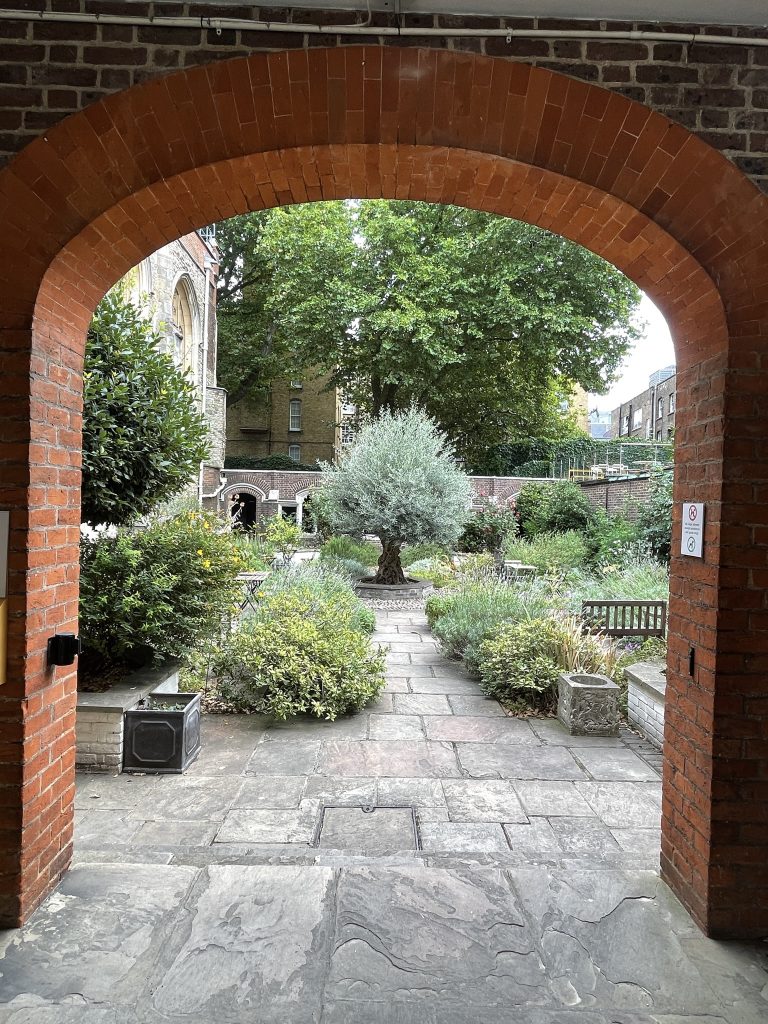
The old buildings at the top of the square were demolished In 1999 and replaced by No. 42 St John’s Square, a glass-fronted office building, which at one time was occupied by the advertising agency McCann-Erickson.
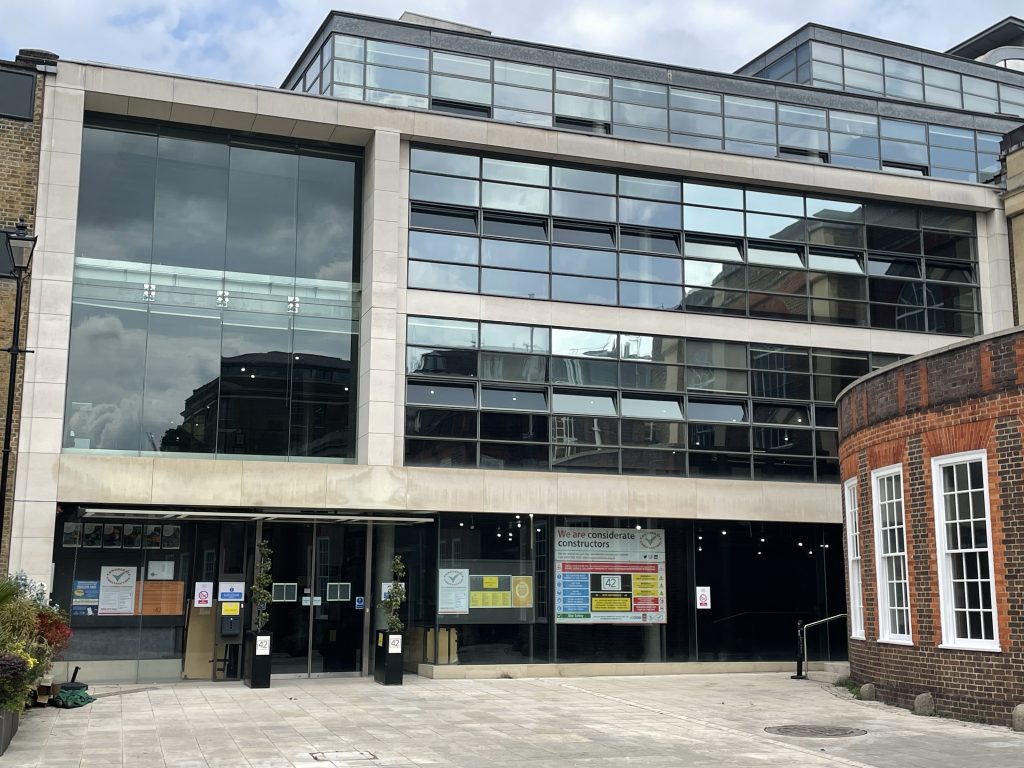
Experts can tell that this building had a very convincing face-lift in the early 20th century, and that the outer walls were rebuilt in fresh brick, while the 1730s house within was retained.
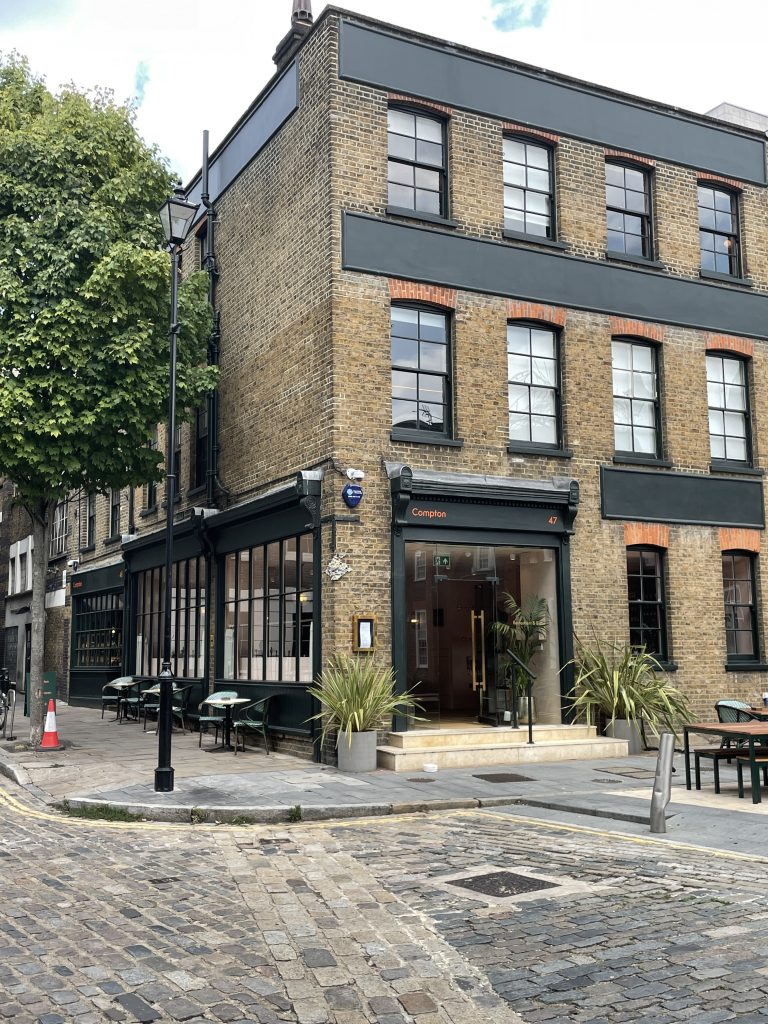
They did it the other way round with the period houses on the other side of Jerusalem Passage – This time it is the façades which are original and the insides which have been replaced. It seems a more logical approach to me. The houses were built as two pairs. Nos 49–50 St John’s Square (and No. 8 Jerusalem Passage) were built in 1780; Nos 51–52 St John’s Square were built a few decades later. The houses were all converted into office and flats in 1988, with everything being new-build behind the attractive old façades.
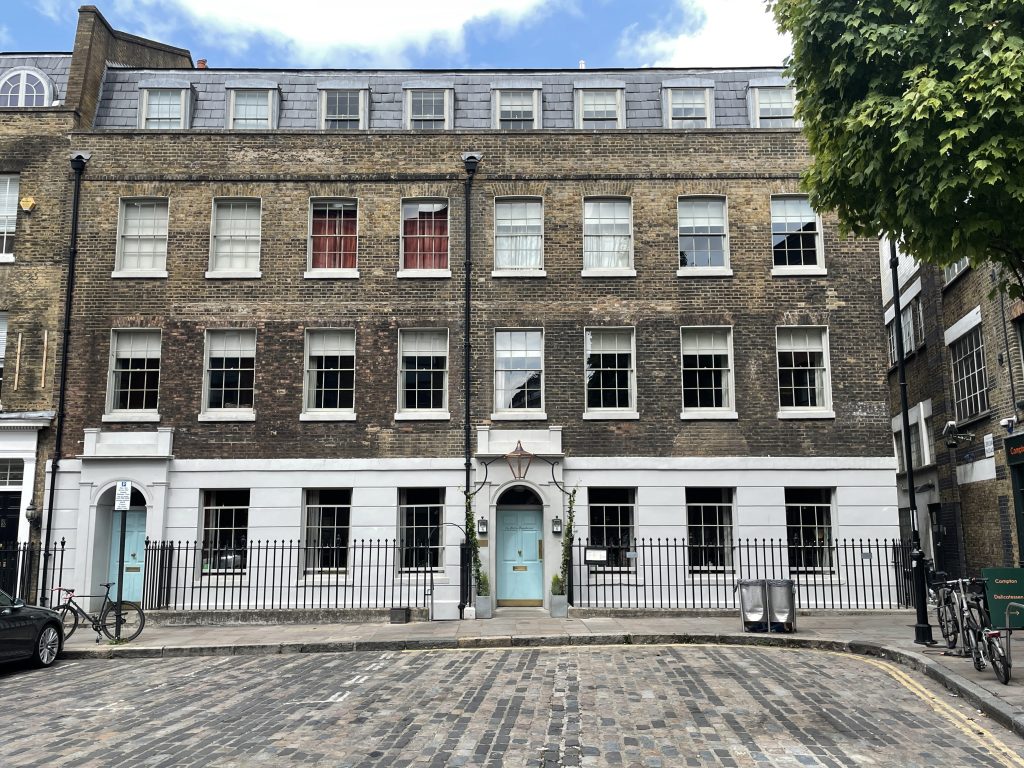
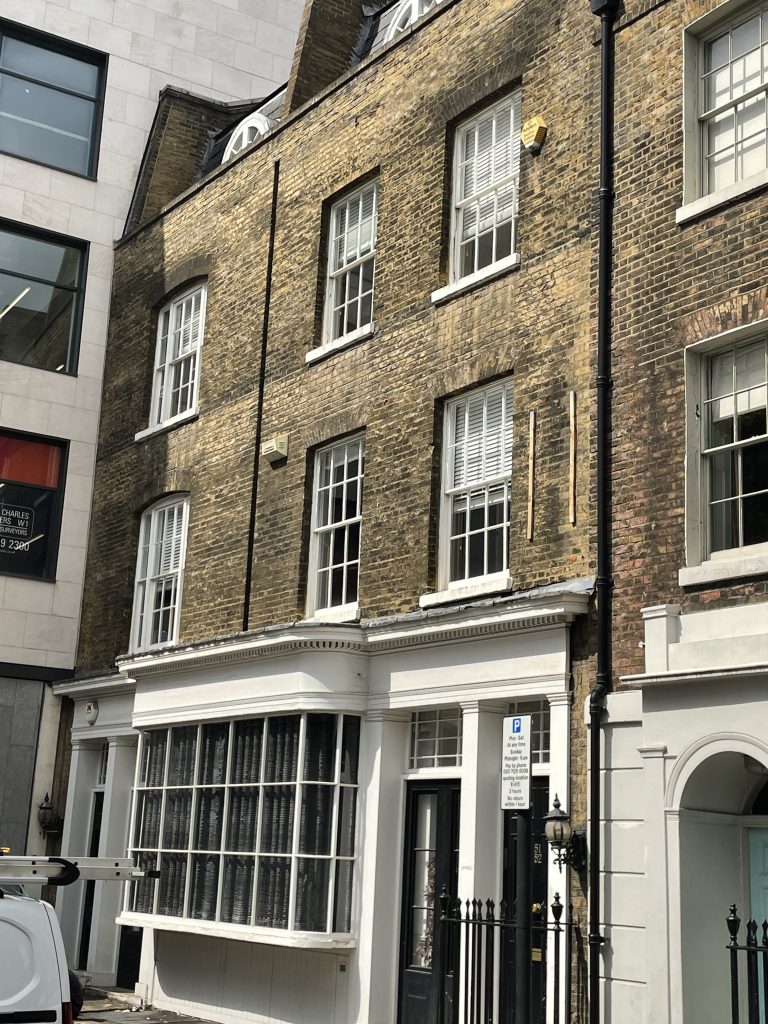
No. 54 St John’s Square is probably another 1960s office block.
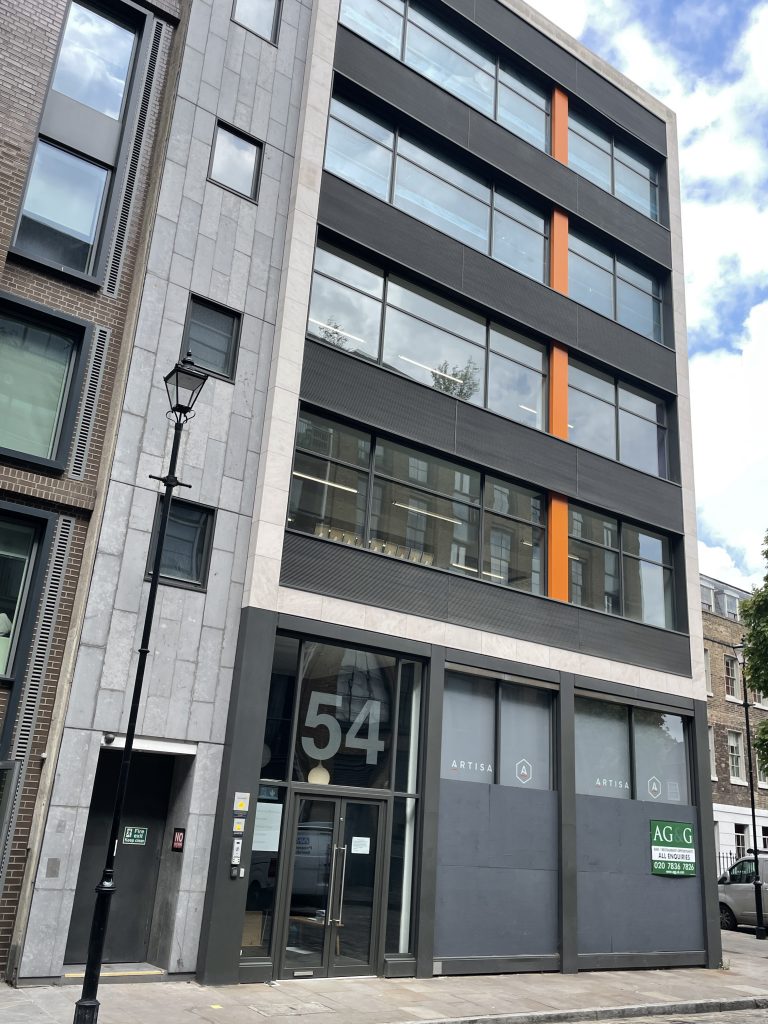
The new Yotel has its frontage on Clerkenwell Road. But a substantial part of its building overlooks a courtyard in St John’s Square.
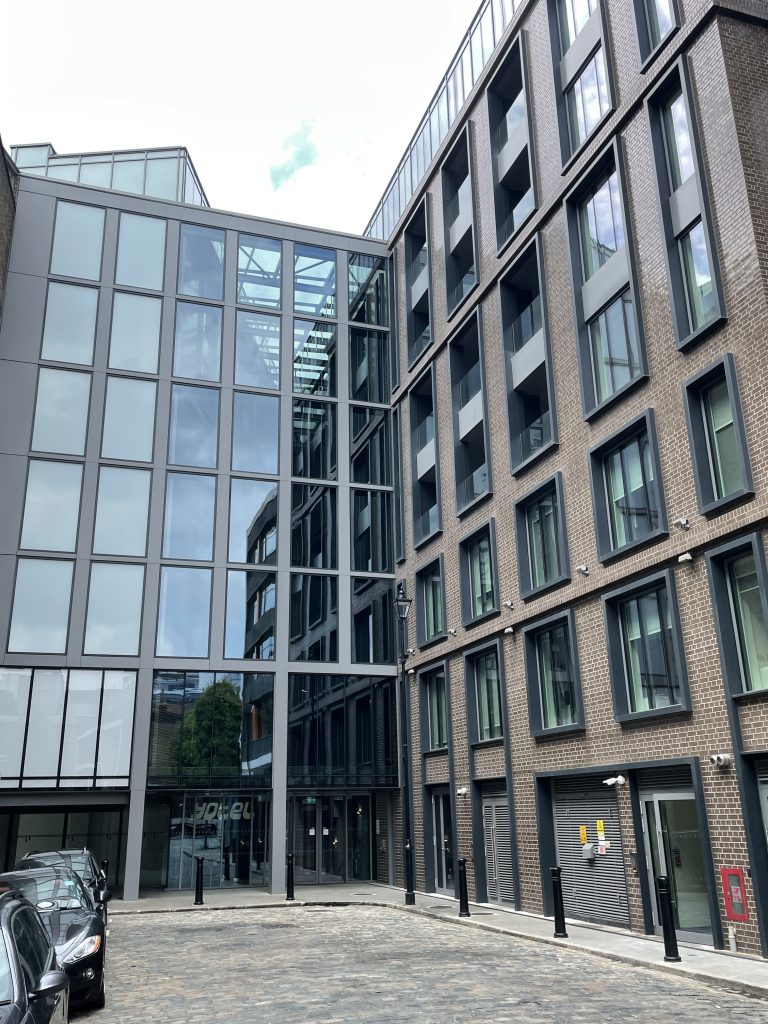
Nos. 57 and 58-89 St John’s Square are buildings which extend from Clerkenwell Road.
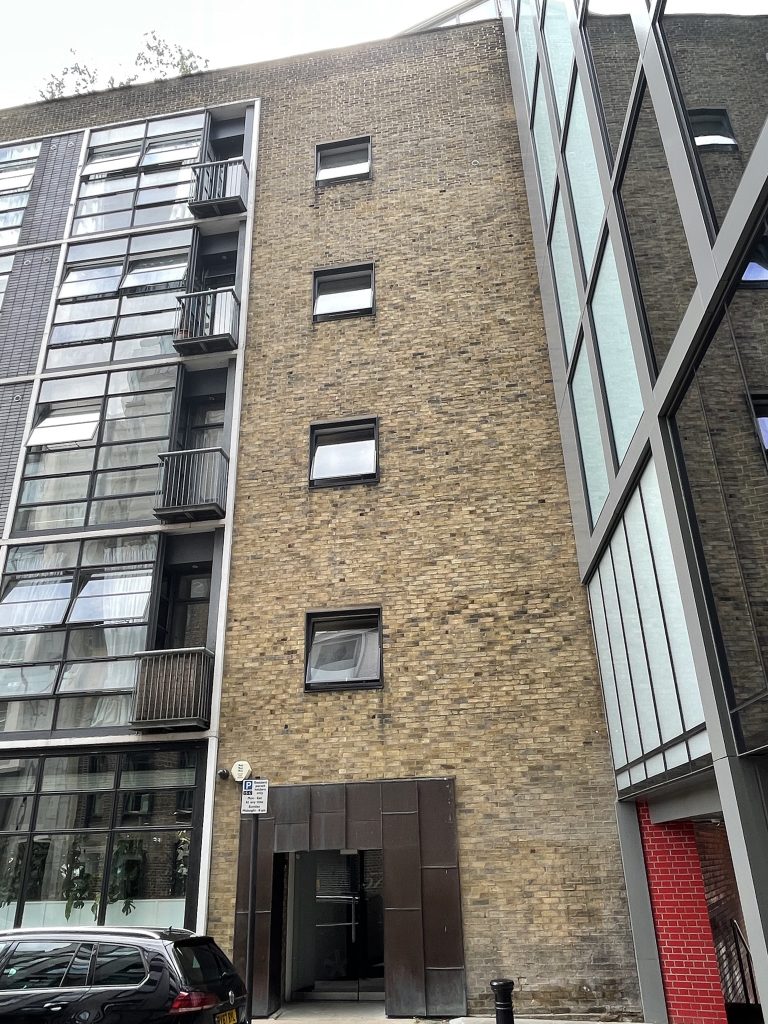
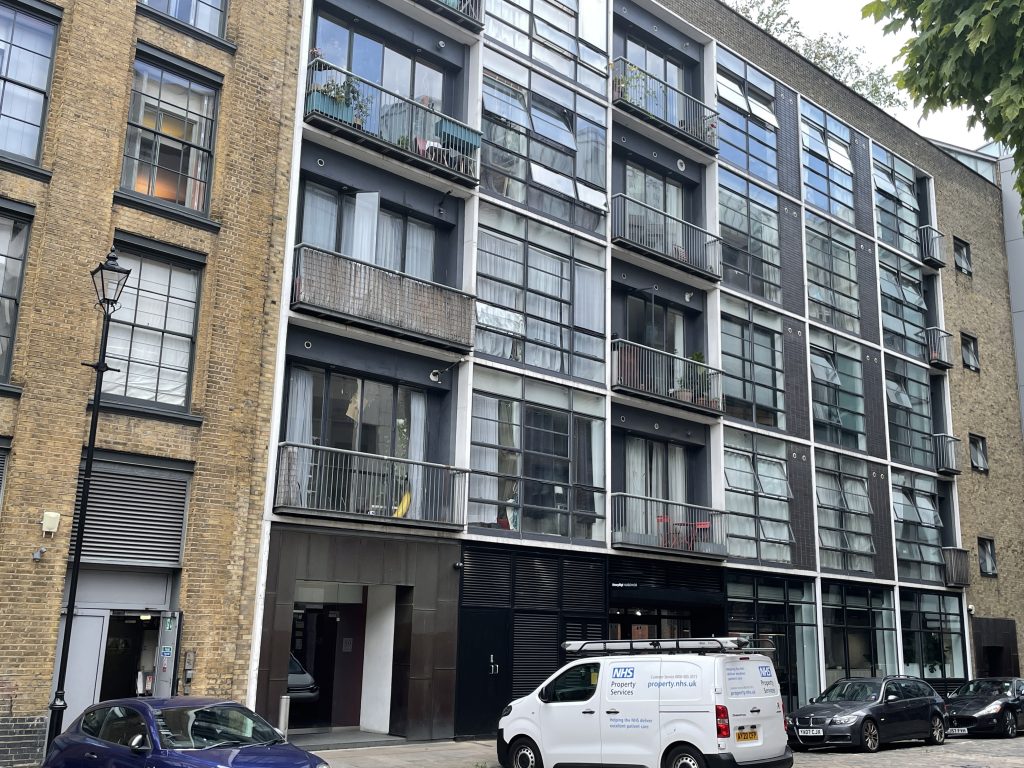
Nos 86–88 St John’s Square is an impressive and attractive building. It was occupied for many years by Zetters Pools. Hotel operators converted it in 2004 into The Zetter Hotel, and very shrewdly kept the Zetter name.
